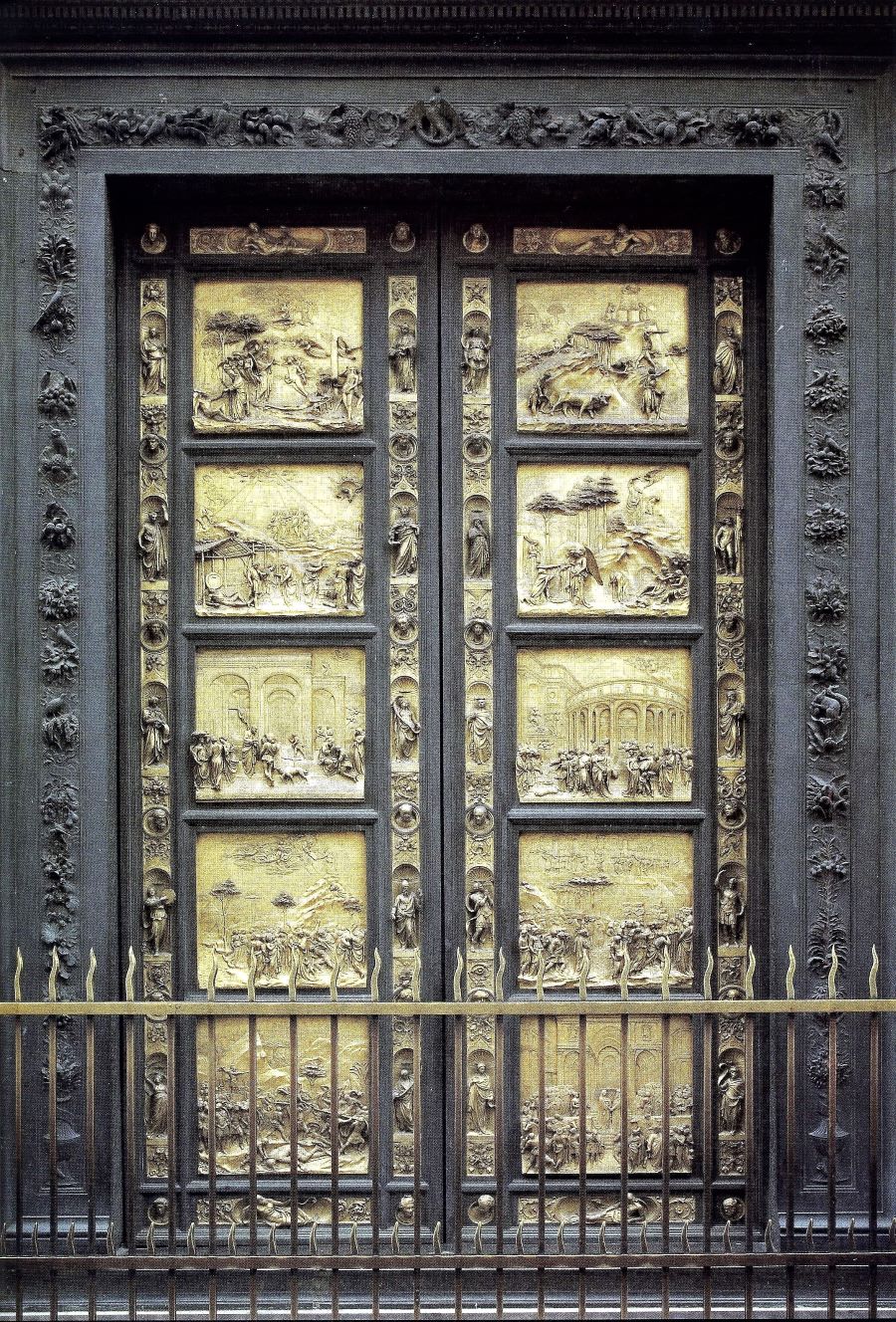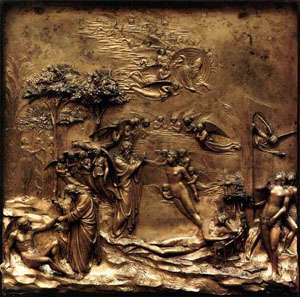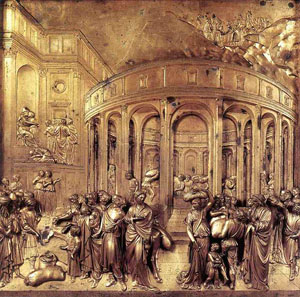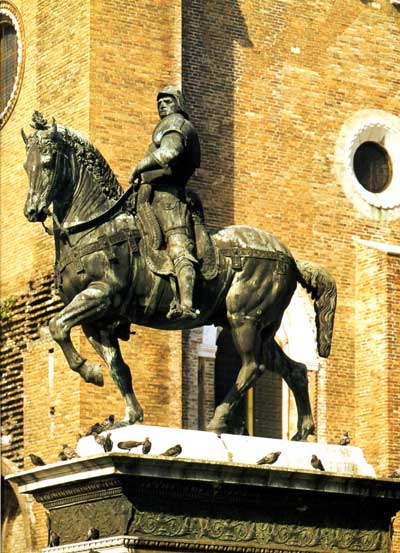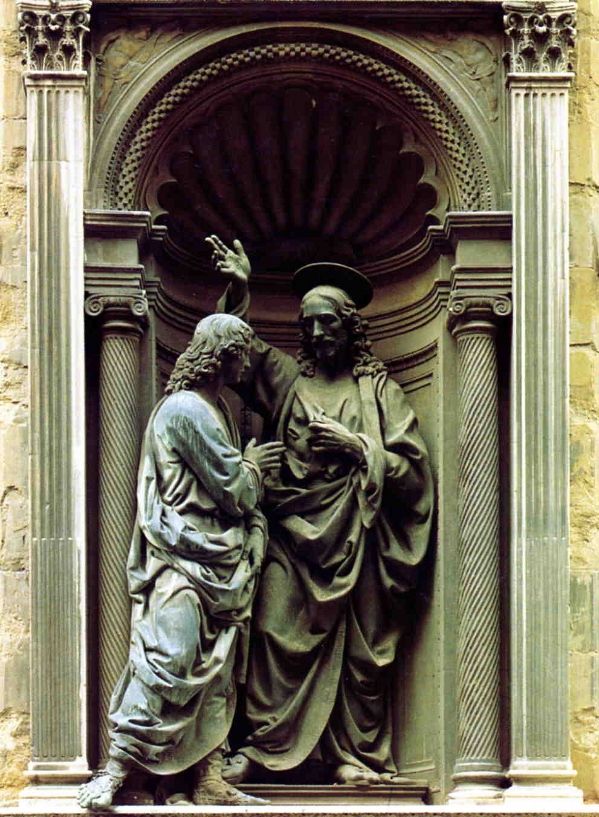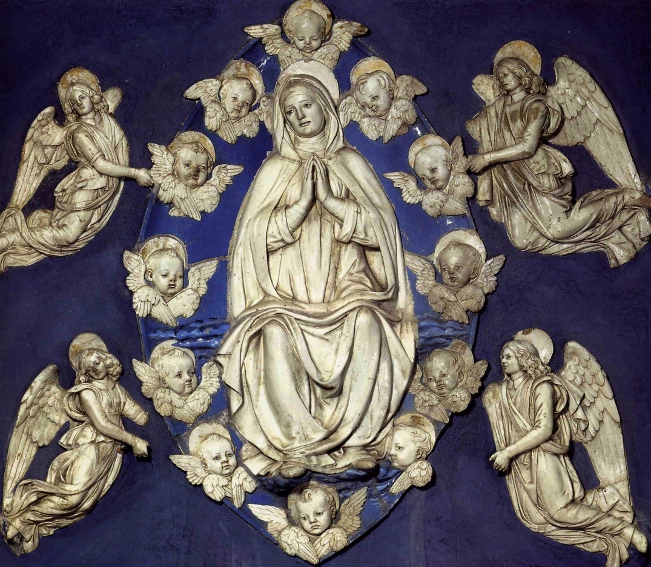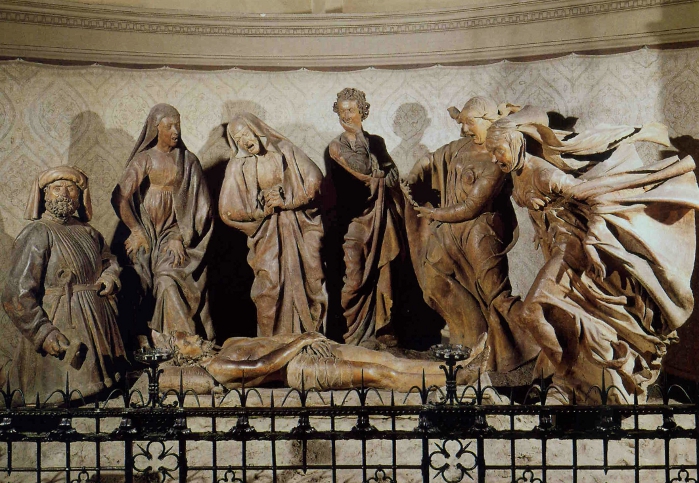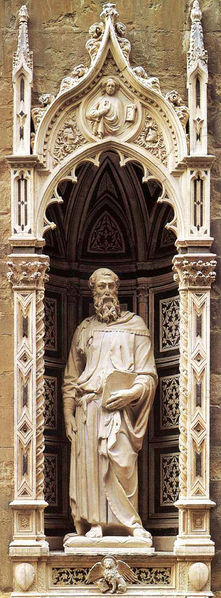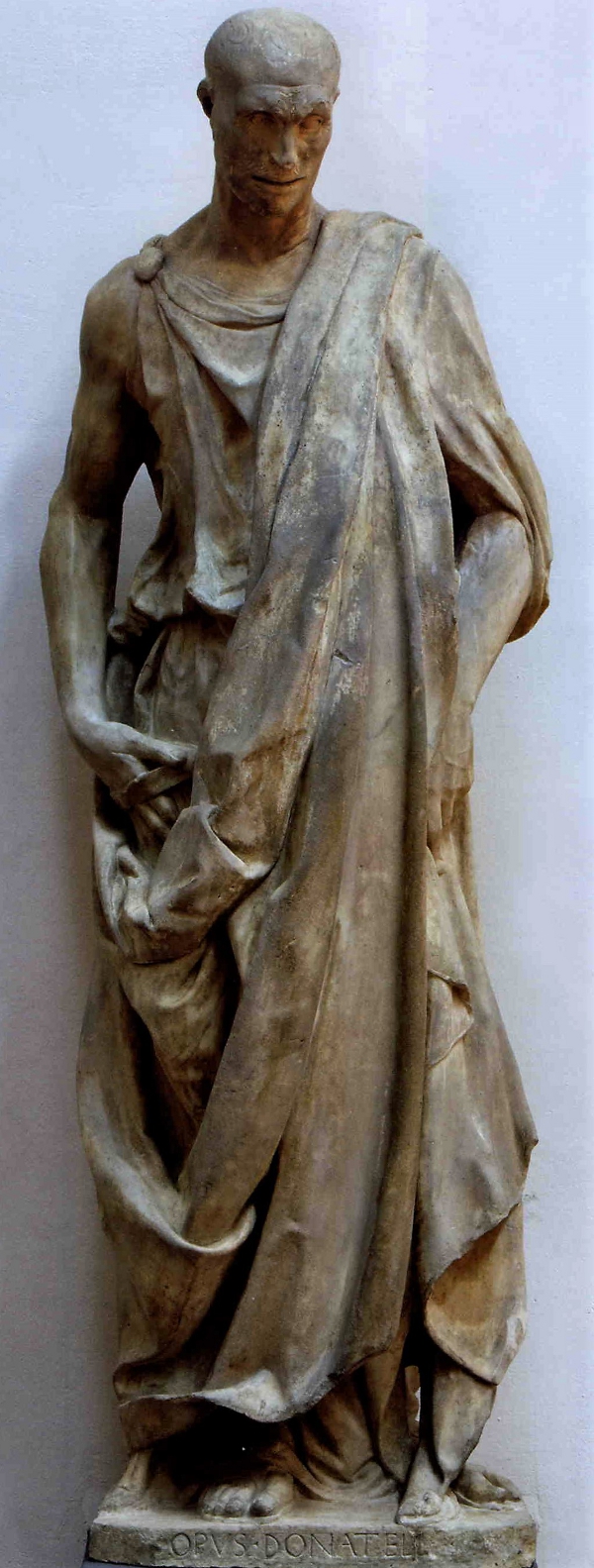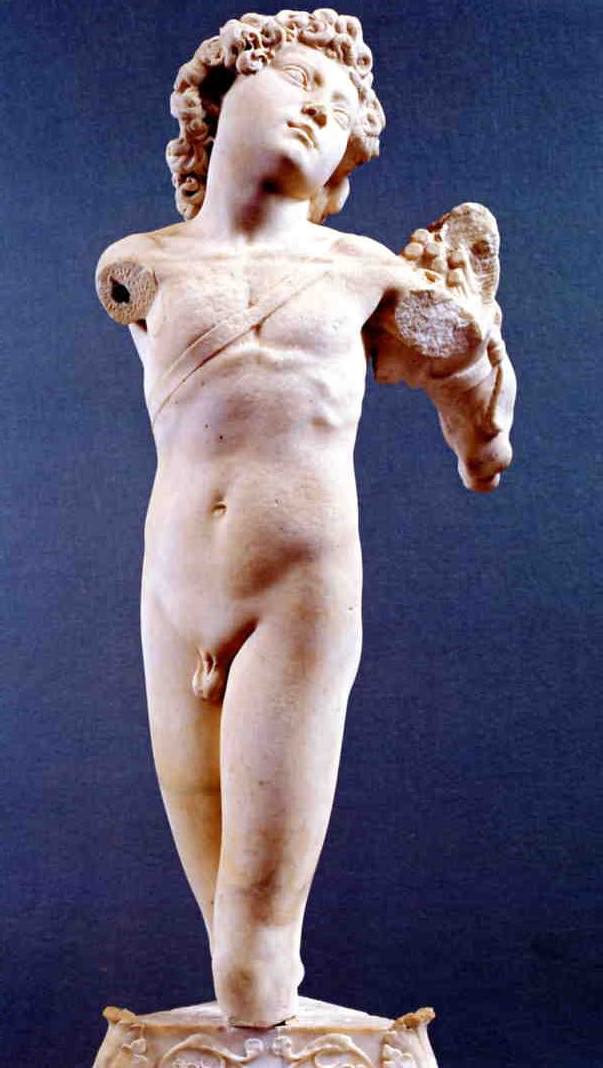Renaissance Sculpture Masterpieces
Early Sculpture of the 15th century.
Lorenzo Ghiberti.
The beginnings of Renaissance Sculpture as an art form sprang from the commissioning of two doors for the Baptistery in Florence. The artist tasked for this work was the local metalworker Lorenzo Ghiberti (1378-1455). Ghiberti had won a competition for the first door to be completed in bronze which was to be a replacement for an existing wooden door. The success of Ghiberti’s first effort resulted in the Guild of Florentine Merchants commissioning him for the second set of doors these are famously referred to as the Gates of Paradise.
Ghiberti was now an independent craftsman and unlike his work on the first door some twenty- four years earlier he exercised considerable freedom in his treatment of the Paradise doors. The Merchant Guild was the first to fully accept this change in the client-artist relationship and that proved to be a major turning point for the future of art. For the gates of paradise, Ghiberti reduced the number of scenes from 28 – on the first set of doors - to ten.
These ten reliefs portray figures from the Old Testament. Beginning at the top left they are Adam and Eve, Noah, Isaac, Moses, and David. On the right door are, Cain and Able, Abraham, Joseph, Joshua, and Solomon. These panels are framed by figures of the prophets set in a slim vertical arrangement, they alternate with small busts and appear as three-dimensional sculptures. Read more about Ghiberti and the placement of these doors.
Andrea del Verrocchio.
Andrea del Verrocchio (1435-1488) was much admired by the Medici the famous family who exerted huge influence over the City of Florence. He was multitalented with his own workshop; the young Leonardo da Vinci was one of his many pupils.
Verrocchio’s bronze statue of Jesus and the Doubting St Thomas (1465-1483) was made to be placed in a niche on Or San Michele. The sculpture was radical in its expression of movement and gesture. Jesus stands within the niche with his cloak opened revealing the wound in his side, his right arm is raised adding yet more movement to the statue. Thomas’ right foot is placed outside of the niche facing away from it, his body is posed in a twisting motion facing Jesus in the doorway.
This half in and half out placement breaks from the earlier tradition of figures standing formally within the confines of the niche and is a powerful reminder of Verrocchio’s command of the human body.
The magnificent statue of Bartolommeo Colleoni, a Venetian general, illustrates the great standing held by Verrocchio. His fame was so great that the rival city of Venice commissioned him (a Florentine) to produce this equestrian statue. I have seen this one in Venice, it is difficult to miss, and very, very impressive.
Jesus and the Doubting St Thomas was placed in an external niche of the church of Orsanmichele in 1483. The artist chosen for this work was Andrea del Verrocchio.
Renaissance Sculpture Masterpieces.
Luca della Robbia.
Luca della Robbia was born in Florence (1399/1400) a pupil of Nanni di Banco he was the son of a wool merchant.
He began his career
working in marble and bronze but is remembered for his colourful –
glazed terracotta reliefs.
Luca became a prominent craftsman of the Early Renaissance; he started his own highly productive workshop which was still active after his death in 1482.
Niccolo` dell` Arca.
Niccolo` dell` Arca (1434/1494) is best known for his group of the exquisitely executed terracotta group, The Lamentation for Christ, (1462/63). Originally created for the Santa Maria della Vita in Bologna it is now housed in city’s Pinacoteca Nazionale Museum. The group is extraordinary in its emotional sweeping movement typified by the two women on the right, their gestures are contrasted by the more serene mourners in the centre and on the left of the sculpture. The drama of this piece is still very evident despite some fading of the original colour.
Donatello.
Donato di Niccolo` di Betto Bardi, more commonly known as Donatello (1386-1466), is regarded by many as the most influential sculptor of his age. Just as Michelangelo was the greatest sculptor of the 16th century and Bernini the greatest of the 17th, Donatello was undoubtedly the master sculptor of the 15th century.
His marble statue of the bald prophet Habakkuk nicknamed “Il Zuccone” (the Pumpkin) is extremely naturalistic, even more remarkable considering it was intended to be placed in a niche in the Campanile of Florence’s Duomo. Donatello’s bronze statue of the youthful David is one of the most revolutionary and ambiguous Renaissance works. The strangely disturbing figure of the effeminate youth in a fancy hat and boots who holds a sword standing on the head of the slain Goliath is also a sculptural masterpiece of the highest quality.
 Donatello, David (w)
Donatello, David (w)Cosimo de' Medici owned this statue and placed it in the courtyard of the Palazzo Medici in Florence, it is now in the Bargello.
The St Mark marble statue stands approximately seven feet and nine inches high in an exterior niche of the Orsanmichele church, Florence. The work was commissioned by the linen weaver’s guild of Florence.
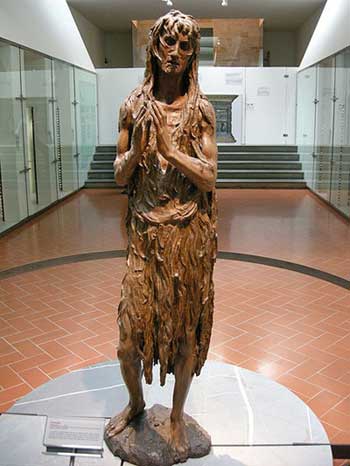 Donatello
The Magdalene Penitent. c.1453-1455
Museo dell'Opera del Duomo, Florence (w)
Donatello
The Magdalene Penitent. c.1453-1455
Museo dell'Opera del Duomo, Florence (w)Personal Opinion: -
This was carved from wood when the artist was over sixty years old. I have no doubt that the carving is wonderful but... I just cannot get the image of a zombie from a modern-day B-movie out of my mind. Sorry, Donatello!
- Home
- Early Renaissance Sculpture
